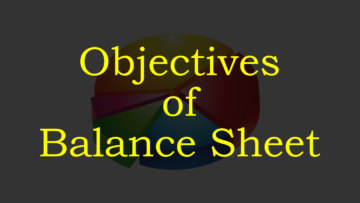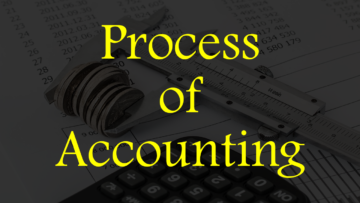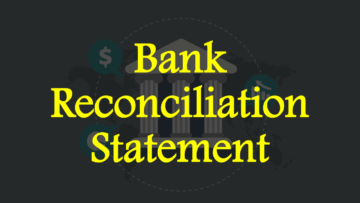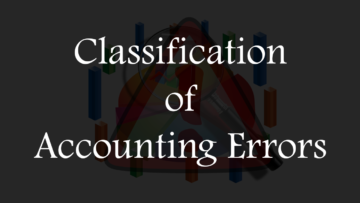There are mainly two parties in business, one is the buyer and the other is the seller. The buyer buys goods and services from the seller and the seller sells the goods and services to the buyer. When there is a transaction of goods and services, there may be some shortcomings, conditions, etc. In such a situation, the transaction is not completed until all the shortcomings, conditions, etc. are fulfilled. To solve this situation, debit note and credit note are used in accounting. Its use helps in maintaining accounting balance between both parties.
Mainly debit note and credit note are used to manage returns and adjustments. Returns include sales returns, purchase returns, and adjustments including sales adjustments, purchase adjustments, offer adjustments, etc. With its help, the account of both parties can be managed. If the buyer has to return the goods or services for any reason, he uses a debit note and the seller issues a credit note in return. If one party issues a debit note, it becomes a credit note for the other party and vice versa.

Table of Contents
Debit Note and Credit Note
Debit note and credit note are described below:
Debit Note
Debit note is a document used to debit a party’s account. Due to the concept of debit note and credit note and the double entry system, if one party issues a debit note it becomes a credit note for the other party and vice versa. When to issue a debit note depends entirely on the nature of the transaction. Debit notes can be used whenever a situation arises where a party’s account needs to be debited. Whether the debit side of an account will be positive or negative depends on the nature of the account.
| DEBIT NOTE |
| If debit note is issued by the buyer |
| Then that debit note becomes a credit note for the seller |
According to subsection (3) of section 34 of The Central Goods and Services Tax Act, 2017, “Debit note means a document issued by a registered person.”
Credit Note
Credit note is a document used to credit a party’s account. When to issue a credit note depends on the nature of the transaction. Due to the concept of debit note and credit note and the double entry system, if one party issues a credit note it becomes a debit note for the other party and vice versa. A credit note can be used whenever a party’s account requires credit. Whether the credit side of an account will be positive or negative depends on the nature of the account.
| CREDIT NOTE |
| If credit note is issued by the seller |
| Then that credit note becomes a debit note for the buyer |
According to subsection (1) of section 34 of the Central Goods and Services Tax Act, 2017, “Credit note means a document issued by a registered person.”
When are debit note and credit note issued?
Debit note and credit note are issued in the following cases:
1. Return:
Returns include purchase returns and sales returns. Every business may have to return goods and services at one point or another for one reason or another. Goods and services may be returned by the buyer or recalled by the seller. When the buyer returns the goods and services, he issues a debit note because he would have credited the other party while purchasing, similarly when the seller recalled the goods and services, he issues a credit note because he would have debited the other party while selling.
2. Adjustment:
Adjustments include sales adjustments, purchase adjustments, offer adjustments, etc. Adjustments can be made by the buyer and the seller. When to use debit note and credit note depends on the nature of the transaction. For example, if a seller makes an offer on the purchase of goods and services or gives a target, he issues a credit note after a successful transaction. A credit note issued by the seller becomes a debit note to the buyer and vice versa. If a debit adjustment is to be made, a debit note is issued and if a credit adjustment is to be made, a credit note is issued.
3. Error:
Debit note and credit can be issued if there is an error in the transaction document. Transaction document contains amount error, tax errors, quantity errors, etc. For example, if a buyer has purchased goods from a seller, but tax has not been charged correctly in the transaction document, then in this situation, a debit note and credit note can be issued. Who will issue the debit note and who will issue the credit note depends on the nature of the transaction. Using it, there is no need to tamper with the original document because all changes are made through it.
Note: Debit notes and credit notes may be issued in other cases also.
Read Also:
QNA/FAQ
Q1. What is debit note?
Ans: Debit note is a document used to debit a party’s account.
Q2. What is a credit note?
Ans: Credit note is a document used to credit a party’s account.
Q3. Are sales returns made through credit note?
Ans: Yes, sales returns are done through credit notes.
Q4. Are debit notes and credit notes issued on reverse (vice-versa) basis?
Ans: Yes, debit notes and credit notes are issued on reverse basis.
Q5. Are purchase returns made through debit note?
Ans: Yes, purchase returns are done through debit note.
Q6. When are debit note and credit note issued?
Ans: Debit note and credit note are issued in the following cases:
1. Debit notes and credit notes are issued in purchase returns and sales returns.
2. Debit notes and credit notes are issued in sales adjustments, purchase adjustments, offer adjustments, etc.
3. Debit notes and credit notes are issued when there is an error in the transaction documents.













